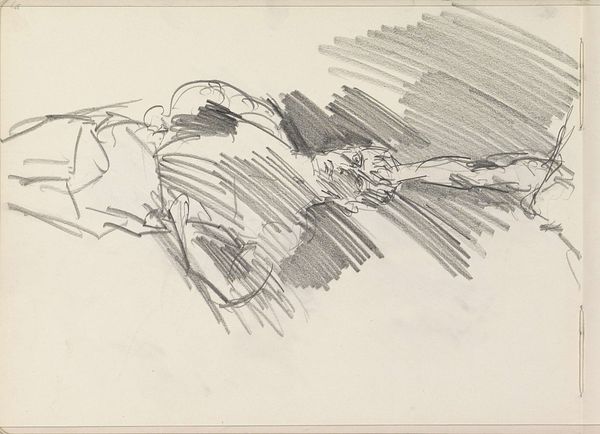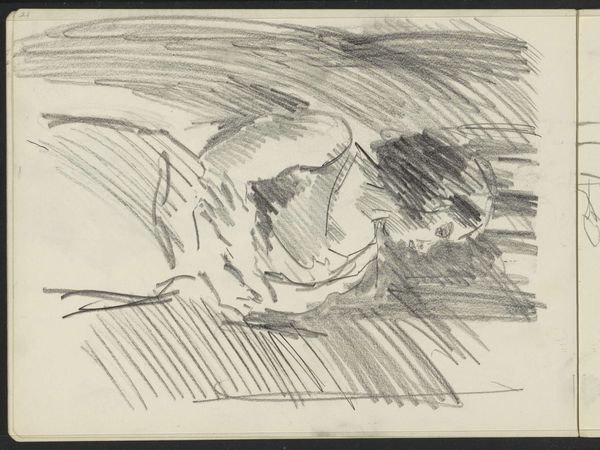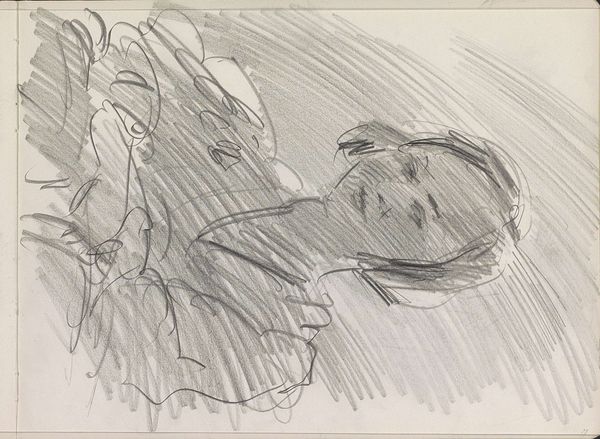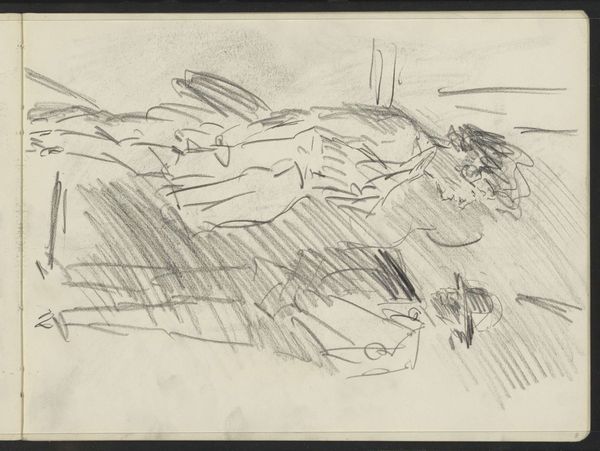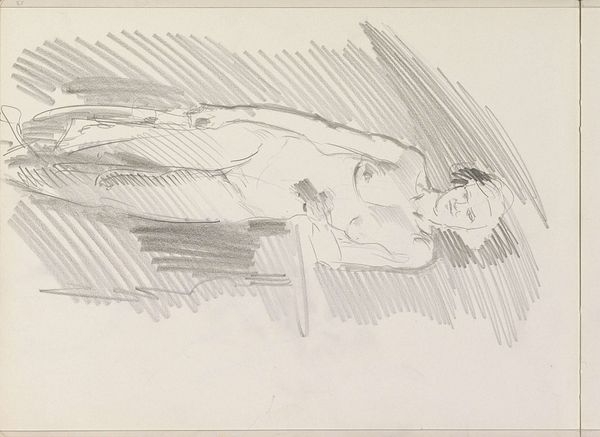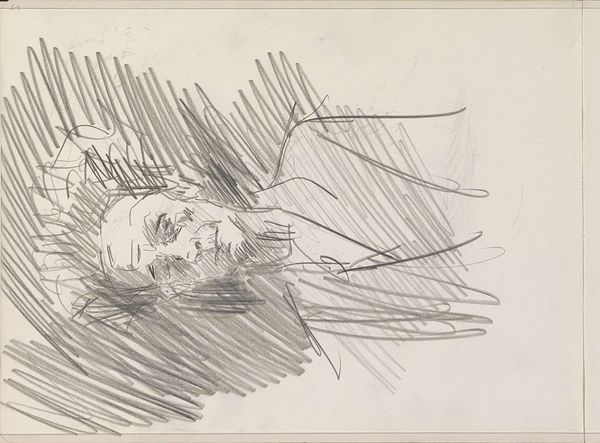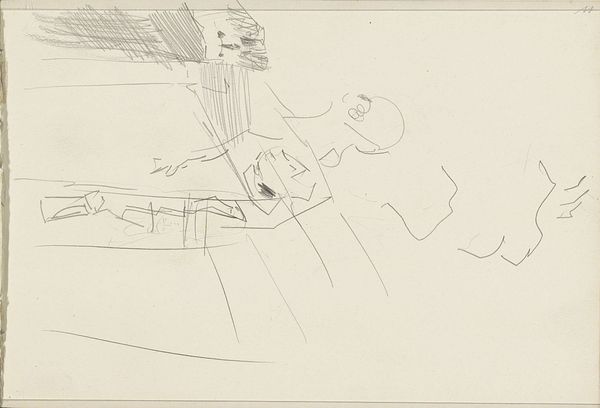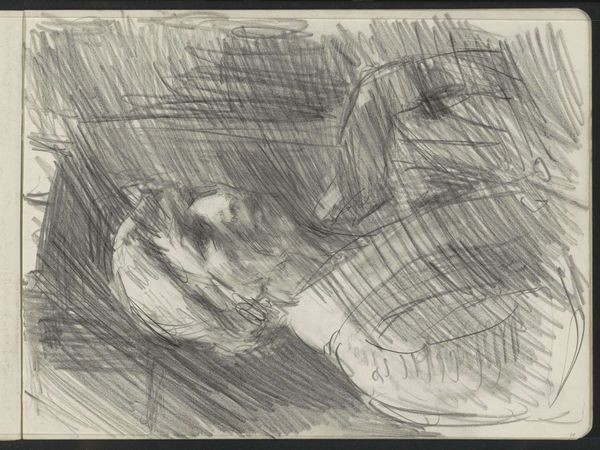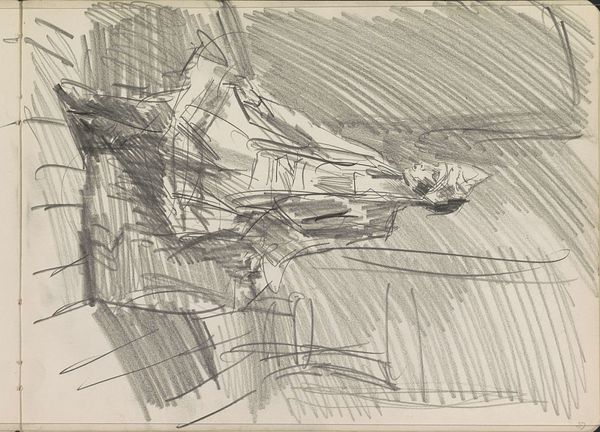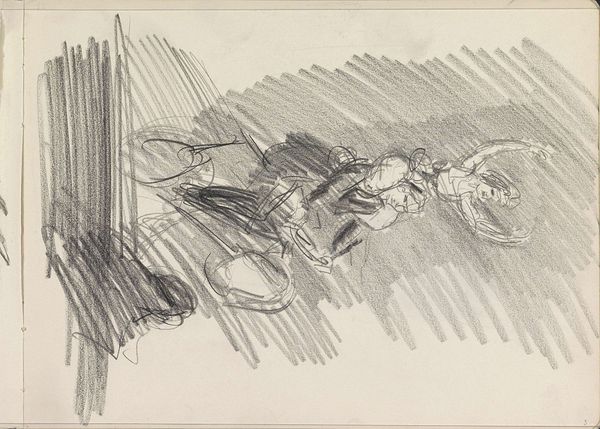
drawing, dry-media, pencil
#
portrait
#
drawing
#
figuration
#
dry-media
#
pencil
#
modernism
Copyright: Rijks Museum: Open Domain
Curator: Ah, here we are in front of Isaac Israels’ “Twee vrouwen,” or “Two Women” done sometime between 1915 and 1925. It’s a drawing, mostly in pencil. What jumps out at you? Editor: The first impression is fleeting and ethereal. Like smoke. There's a ghostliness to it. I wonder, is that sense of transparency deliberately melancholic? Curator: Could be, knowing Israels. His touch, especially in drawings like this, is so wonderfully light and airy. He really captures a certain ephemeral beauty, doesn’t he? Look how he uses simple hatching to create volume and shadow. Editor: Hatching like nervous energy, a whole universe hinted at, but just barely caught. What’s curious, however, is the layering of faces—they're close, but avoid contact. Symbolically, this visual strategy conveys a sense of closeness and distance simultaneously. I find it interesting to imagine how those figures may have related to one another at the time the work was conceived. Curator: I agree completely. The figures seem lost in their own worlds, though intimately linked in the composition. And to me it evokes a sense of quiet intimacy and shared feminine space. But I wonder, beyond that intimacy, is there perhaps also a hint of something untold? It could very well be interpreted differently, as perhaps each is preoccupied with their own personal troubles or concerns at that precise moment in time. Editor: Yes, their placement can invite many readings. These may be friends or family, yet we witness how a gulf quietly persists between any two beings. Also, have you considered how this simple medium is actually enhancing the emotive force of the work? With these strokes, so simple and unadorned, a psychological rawness pierces through and confronts the viewer, no? Curator: Definitely. The choice of pencil, a very accessible and unassuming material, makes the work feel incredibly immediate and vulnerable. And thinking about the time, with all the social changes and shifts in artistic styles of early Modernism, it's like Israels is capturing a mood that’s right there in the air. What's striking is how fresh and relevant that mood is even a century later. Editor: Precisely, time and circumstance cannot change this intimate human story one iota. What remains in its rawest and most universal aspect is an encounter between human hearts in an interpersonal space of great possibility. Israels manages to capture with profound grace the psychological complexity, mystery and emotional sensitivity inherent to it. Curator: Absolutely, a captivating snapshot of a moment brimming with untold stories.
Comments
No comments
Be the first to comment and join the conversation on the ultimate creative platform.
